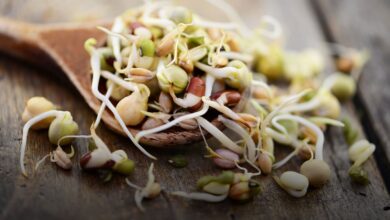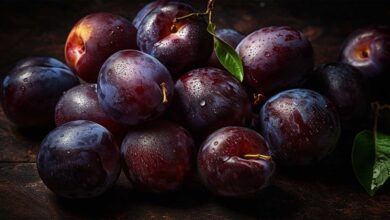What are their health benefits?

For laymen, the essential amino acids that our cells need to make their own proteins are found in animal products, especially meat. However, the world of plants is also rich in these precious molecules, with serious advantages: less expensive, less waste generation for the body, fewer calories, richer in fiber and minerals.
Our body is unable to manufacture all the amino acids that are the building blocks of proteins. Therefore, some of it must be provided through food. They are called essential amino acids. Animal products (meat, eggs, and cheese) contain all nine essential amino acids in the correct proportions, which is their main benefit.
However, it is very possible to call a vegetable as the main source of proteins, due to the fact that the concept of the fact is limited: the assimilation of proteins is limited by the essential amino acid content. Weaker. Thus, if one of the 20 amino acids is missing in food, this deficiency constitutes a “limiting factor” for the use of the other amino acids. Thus, lysine, which is rarely found in most grains, constitutes the limiting factor. But nature has done well, because the essential amino acids that legumes lack (cysteine and methionine) are found in grains.
Moreover, common sense is not wrong, because different culinary traditions naturally combine legumes and grains in the same meal. This is a necessary condition for better assimilation. For example, Indians combine lentils with rice; Mexican or Creole, red beans and rice. Or Chinese, soy with rice.
Read also How to combine vegetable proteins?
Proteins that produce less waste for our body
Our cells receive raw materials from the digestion of food and transform them into finished products which must meet the functional needs of our body. As in a factory, the processing of raw materials generates waste. The more waste there is, the more our organs work to eliminate it and the more clogged our tissues become. This is the famous concept of toxemia, dear to naturopaths.
Our health capital is directly related to the amount of waste in our bodies.
To reduce this, it is necessary to take care not to overeat, to choose organic foods, to respect the correct nutritional associations, and that these foods do not overload our humors (blood, lymph, excess fluids and intracellular fluids) with toxic intermediate products. Clogging.
So, unprocessed plant foods are the most interesting. They are best used by our biomechanics, providing essential nutrients such as minerals, antioxidants and essential fatty acids.
In addition, legumes are the plants that receive the least amount of chemical treatment, even in intensive conventional agriculture. Its cultivation requires very little nitrogen fertilizer. Therefore the risk of nitrate contamination is practically zero.
On the other hand, proteins of animal origin, starting with meat, contain a certain amount of waste (uric acid, stress hormones produced at the time of slaughter) which are often added to various treatments (drugs, hormones). Receive. These wastes and toxins can disrupt the quality of our humors, disrupt the functioning of our cells and exhaust our elimination organs. So when we eat a piece of meat, we are also consuming all the waste that the animal had in its blood and muscles at the time of slaughter. This is the case with uric acid, which is the cause of gout attacks and kidney stones and which, in excess, leads to kidney fatigue.
Plant proteins produce half the amount of rotting that animal proteins produce; They therefore better respect our intestinal microflora, which ensures the synthesis of vitamins and the effectiveness of our immune system.
Animal proteins, source of hidden fats
Other molecules, such as saturated fatty acids and cholesterol, found in large quantities in most animal proteins and especially in red meat, cold cuts, cheese and eggs, can pose serious problems for our cardiovascular system. If there are too many, they will harden our cell membranes and thus change the good exchanges between the cells and the nutrient environment, i.e. the extracellular fluid. In addition, when cholesterol is oxidized by free radicals, it deposits in the arteries, creates atheromatous plaques and can cause strokes and myocardial infarction.
Proteins that respect acid-base balance
Our body is equipped with means of homeostasis that ensure the regulation of biological parameters to perform its functions properly. This is the case for body temperature and the balance between acids and bases.
Proteins are made up of amino acids that, as their name suggests, have an acidic function. The advantage of plant proteins is that they also contain bases (magnesium, potassium, calcium) that balance acids. This peculiarity makes them neutral from the point of view of acid-base balance, while animal proteins are acidified. Wickert's work(1), in 2005, also show that plant proteins protect our joints, as well as the body, from the risk of osteoporosis. They are actually excellent sources of calcium for our osteoarticular system, but they are also excellent sources of magnesium for our nervous system.
Legumes, the best source of plant-based protein, even have the luxury of being richer in iron than most vegetables, grains and even meat products. Thus, in 100 grams of lentils there are 9.7 mg of iron, while for the same amount of beef we will have only 2.1 mg.
Legumes are also considered one of the best sources of calcium, contrary to popular belief. For example, beans and chickpeas contain as much calcium as camembert or cottage cheese. In addition, plant-based calcium is better absorbed than calcium from dairy products. In fact, dairy products contain a lot of saturated fatty acids, which limit their absorption by saponification.
In general, these legumes also contain a fairly high amount of trace minerals such as copper, manganese, zinc and iodine, which are essential for the proper functioning of our internal chemistry.
Plant proteins that protect the heart and blood vessels
The fiber content in legumes is the highest that can be found in our diet. Fiber helps slow the absorption of sugars and fats that cause obesity. Thus, 50 grams of chickpeas provides 13 grams of fiber, or nearly half of the daily requirement.
This fiber also has a huge benefit: it makes you feel full, in other words, unlike high-calorie foods like cheese and cold cuts. One of the great advantages of these proteins is that we consume them in smaller quantities, which protects against the risks of excess weight and blockages. Remember that excessive calorie consumption is the main cause of obesity and the deterioration of our health, due to excess toxins and toxic substances.
The richness of fiber, combined with the absence of cholesterol and low presence of saturated fats in legumes, makes them the best source of protective proteins against cardiovascular risks. Even soy, which contains 17 to 18% fat, is cholesterol-free.
Legumes are also a good source of B vitamins. Vitamin B1 (thiamine) is important for the functioning of the cardiovascular and nervous systems. Vitamins B2 and B3 are involved in sugar metabolism. As for vitamin B5, which is also found in legumes, it participates in fat metabolism.
Plant proteins: a solution for the future
As we mentioned, they are an important source of nutrients necessary for the proper functioning of our cells: minerals, B vitamins, trace elements and fibre. As such, its nutritional contribution is greater than its animal counterpart.
At a time when the economic crisis forces more and more people to pay attention to their food and health expenditures, the solution of replacing animal proteins, at least partially, with so-called “poor man’s” proteins could be a real opportunity for both the health of our planet and the health of humans, because legumes are real plants. Anti-waste. In fact, it takes 5 to 10 times less space to produce the same amount of plant proteins as animal proteins. They also help fight pollution, because legumes require very little nitrogen fertilizer, which produces the famous nitrates, and receive very little chemical treatment. So we have everything to gain!
What are their health benefits?


